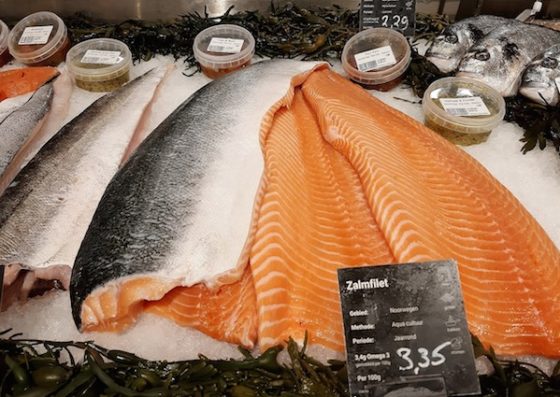Migrating fish end up in Dutch nets, countries want ban


Some 24 German, French and Swiss environmental organisations and anglers associations have urged the Dutch agriculture minister to ban fishing around the Haringvliet dam so migrating fish can return to their spawning grounds in the river Rhine.
Salmon, eel and sturgeon numbers have been falling for years, partly because the Haringvlietdam, built in 1971 as part of the coastal defence system, blocked the migratory route of the fish from the sea to the river.
Considerable financial efforts have been geared towards removing obstacles for the fish, with German investments alone topping €600m up to 2027.
In 2019, after years of wrangling – the Dutch feared the salt water might damage agriculture – it was agreed to open the sluices of the dam a crack several times a year to let the fish through. However, many fish have been ending up in Dutch drag nets and fish traps, the organisations claim.
They have now asked the government to investigate the effects of professional fishing on the migratory fish populations and to bring in a ban on fishing in the immediate vicinity of the Haringvliet dam.
In a first reaction to the petition, D66 MP Tjeerd de Groot said it was very simple and the agriculture minister should ‘just make sure no one fishes near the Haringvliet sluice gates’.
Thank you for donating to DutchNews.nl.
We could not provide the Dutch News service, and keep it free of charge, without the generous support of our readers. Your donations allow us to report on issues you tell us matter, and provide you with a summary of the most important Dutch news each day.
Make a donation